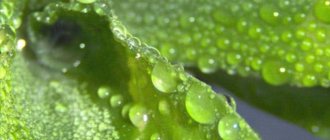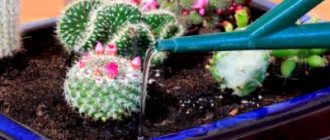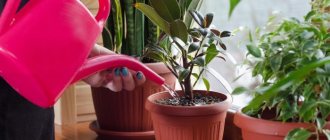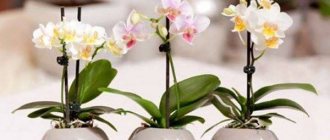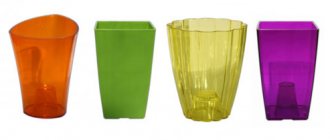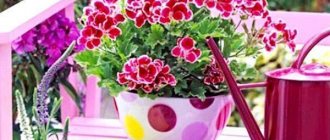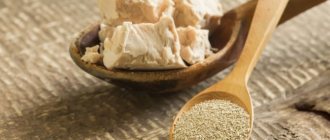Water treatments for indoor plants are vital; watering the root part is not enough; in the dry air of the house, the flowers need to be sprayed and the water in the trays regularly renewed. It is recommended to water the plants with settled water, since tap water contains quite a lot of chemical compounds and metal salts. Tap water also contains contaminants, for example, manganese and iron, the human body has learned to cope with them, but some plants accumulate these chemicals and die from their imbalance. To optimize metabolic processes and enrich the soil mixture, it is recommended to water flowers not only with tap water, but also with boiled water and tea leaves.
Is it allowed?
Watering flowers with boiled water is possible and even necessary.
Many plants have a very negative attitude towards hard H2O, which is drawn from the tap . If you water them regularly, this will lead to gradual salinization of the soil cover.
The roots have a thin membrane that absorbs nutrients after watering. Calcium does not dissolve well in hard water, so if you water plants with it, the pores of the membrane will begin to clog, disrupting water exchange. Their condition will worsen, the flowers may even die.
To protect plants, it is recommended to soften H2O . One method is boiling. After boiling, magnesium and calcium salts settle at the bottom of the pan.
In addition, disinfection occurs - many polluting substances harmful to plants disappear.
What properties and beneficial elements does raw water have?
Raw water is saturated with various elements beneficial to plants, such as oxygen. But, besides this, it contains chlorine and heavy metals, which are harmful to flowers. This is especially true for tap water. It can only be used after steeping.
Rain, snow and melt water are optimal for irrigation. Such water still contains useful substances, and the content of heavy salts is lower due to natural filtration.
Ideal for green pets would be water enriched with silver ions. To make it, you need to dip any silver object into the liquid and let it sit for 15 minutes. Flowers are watered with this water once a week.
Groundwater is not suitable for irrigation at all, since the presence of heavy substances eliminates any benefit for plants.
Advantages and disadvantages
A significant advantage is that, unlike raw water, boiled water contains significantly fewer harmful substances that can worsen the condition of indoor flowers.
Boiled water has a serious drawback - it contains minimal oxygen and nutrients.
But this minus is compensated for in several ways:
- The shortage of necessary elements can be eliminated by applying fertilizers.
- Leave the water to stand for 24 hours, after which it will become more enriched with oxygen.
- Periodically loosen the soil, which will improve root oxygen saturation.
Rules for watering with tea leaves
Welding is the best solution in situations where it is not possible to buy mineral products to enrich the soil. Water flowers only with tea leaves that are weakly brewed, not strong.
Do not use tea leaves with added sugar under any circumstances and remember that the frequency of watering with it should be approximately once or twice every two weeks.
Tea leaves benefit such types of indoor flowers as geraniums and violets; they grow quickly and they constantly need useful nutrition.
Which is correct?
The main rule is not to water flowers that stand on a window or windowsill, and sunlight falls on them. This may cause the leaves to burn.
Some tips on how to safely moisten the soil:
- Before watering the plants, check the condition of the soil. It should dry well. If it collects in clumps, it means there is still enough moisture and watering is not required yet. Excess moisture will damage the flowers.
- When watering, fill with water to the top edge of the pot. All excess will seep through the soil layer and accumulate in the pan.
- You need to pay attention not only to watering the soil, but also to spraying the leaves.
In order not to harm the plants, you need to monitor the temperature of the water for irrigation. It shouldn't be cold or hot. The optimal level is room temperature.
It is recommended to pour it into a watering can in advance and let it brew for a day. During this time, all unnecessary substances contained in the water will settle, and it will acquire the desired temperature.
To prevent the appearance of whitish marks on the leaves after watering, which are typical when watering with boiled water, you should add a little lemon juice or grains of citric acid to the liquid .
You need to spray the flowers and water the soil. The frequency and intensity of watering is individual for each indoor plant.
When is it possible to water with cold water?
With the onset of the cold season, the period of active growth of most plants ends, so watering with warm water becomes inappropriate. During this period, you should adhere to two rules:
- plants that are in a state of complete dormancy (this applies, for example, to deciduous fruit trees) are watered with cooler liquid (12-15 degrees) in winter. Otherwise, the growing season may begin prematurely, which should not happen in autumn or winter;
- plants that have stopped growing in the autumn-winter period must be watered with water colder than the air temperature in the room (8-12 degrees).
But not all plants go dormant during the cold season. If the growth period has not stopped or, for example, flowering has begun, only warm liquid should be used for watering. Excessive cold during this period can lead to disease of the root system, as well as the falling of flowers, leaves and ovaries.
Now you know what kind of water you need to use for irrigation. But do not forget that there are exceptions to any rule. Therefore, if you doubt whether it will be useful to water a particular plant with warm boiled water, seek advice from an experienced gardener.
How to determine that such watering is not suitable?
Signs by which you can determine that such watering is not suitable for a particular plant:
- the tops of the shoots die off;
- buds fall;
- root rot develops;
- the plant withers.
If water for irrigation is not suitable for flowers, even fertilizers are unlikely to neutralize their deteriorating condition.
Frequently asked questions: About watering
1. What kind of water should I use? How to soften water? By available means? Can it be boiled? Who uses filters, is there any benefit?
validity period of apartment card No. 10
Answer:
You can filter water with a filter containing ion exchange resins or osmotic membranes, the result is excellent. But the process is long, and when you need to filter 15-20 liters in order to water all the flowers, it is simply painful. Plus, you regularly need to buy new filter cassettes, which, with intensive use, become clogged within a month or a month and a half.
Boiling water is also effective and also a chore. In addition, when boiling, air is removed from the water, which is not good for plants (the amount of dissolved oxygen is so small that it has no effect on the plant, unless, of course, it is flooded). It’s good to water with snow water, although, of course, it’s also a chore: the volume of snow is large, but you don’t get enough water. In addition, in the city a lot of smoke and dirt settles on the snow; it is better to collect it in the forest away from the highways, which in itself is not always feasible.
In stores you can find a “decalcifier,” that is, “a special product for neutralizing water hardness.” As they write in the annotation, “binds calcium and magnesium salts (causing water hardness), softening water for watering plants.” 500 ml – 85 rub. Most likely this is a solution of sodium salt EDTA, in any case, in the household you can use EDTA (Trilon B) as an anti-scale agent, but calcium dissolves and becomes a complex, but does not disappear.
About watering with cold “hot water”. Softeners and inhibitors are indeed often added to hot water from thermal power plants and boiler houses. However, this water circulates in a closed cycle and does not enter the water supply system. Through a heat exchanger, it heats ordinary cold tap water, which flows from the tap hot. Those. Hot tap water has the same chemical composition as cold water. But there are two differences.
First: hot tap water is most often softer and contains fewer dissolved gases, since the solubility of hardness salts and gases decreases with increasing temperature.
Second: the solubility of everything else increases with increasing temperature. So if the hot water supply system is very old or, on the contrary, completely new, then the hot water may be more “rusty” because it will dissolve iron salts that are present in old and completely new pipes. In addition, hot water can sometimes have an unpleasant taste, which it gets from plastic and rubber parts of the plumbing system (this almost never happens in residential buildings). This taste does not affect the chemical composition of the water in any way.
Conclusion: in the vast majority of cases, if you live in a normal residential building and your hot water is not rusty, it is better to settle it for irrigation. The taste, if there is one, can be ignored.
Freezing water in the freezer can only give a positive result in softening the water if it is frozen correctly. If you simply freeze water, then all the salts are included in the ice, and when it thaws, they return to the water. To obtain melt water, you must first monitor the process by freezing the water. Water does not freeze immediately; a certain amount of water remains, which then also freezes, but it is this water that does not immediately freeze that is a saturated saline solution, which has a lower freezing point. If you have time to drain this unfrozen solution, then the melted ice will produce melted, soft water. Otherwise, freezing makes no sense. Another thing is that there are different cities and the ecology too. If someone’s municipal water supply system is doing a bad job, then there’s no point in arguing, it will be pointless. And hot water is not chlorinated. This is pointless, because... it undergoes intensive boiling in boiler rooms, on the walls of which, by the way, harmful magnesium and calcium salts remain.
The only reliable means of softening cold water is the addition of oxalic and some other acids to control acidity. But you still need to protect it from chlorine.
2. Can you really water flowers with mineral water? it contains minerals needed by flowers, but in smaller quantities than in mineral fertilizers, in addition, it contains oxygen.
Answer:
Firstly, where does the oxygen come from? There is carbon dioxide there, but there is hardly more oxygen than in ordinary water.
And most importantly, the composition of mineral (not drinking, but medicinal mineral) waters is very different. There are ferruginous waters, and there are sulfurous ones. And plants need a certain balance of microelements. It is micro, since there is not enough nitrogen and phosphorus in the mineral water, this is not slurry.
Secondly: why? There are many fertilizers for indoor plants on sale. There are microelement complexes, for example, “Cocktail”. Why reinvent the wheel? There will be no savings from this either: by diluting liquid fertilizer, we will get much more solution than you can buy mineral water with this money. What's the point?
This is entertainment for the lazy. Poor tap water is indeed a problem, but then you need to water it not with mineral water, but with drinking water. For example, the one sold in five-liter plastic bottles. Or the one in 20-liter bottles for office drinkers (this is really soft water, since the method of ion exchange resins or osmosis is used for purification).
3. How to acidify water?
Answer:
You can acidify with citric acid, i.e. it gives an effect. Here is a person with 15 years (!) of experience in growing bonsai directly advises: “3-4g per 10 liters, or, if funds allow, ascorbic acid.” https://www.bonsai.ru/agro/nachalo.html Whether acidification is NEEDED depends on the species characteristics of the plant; some need it, others don't. For example, many orchids need this.
4. Do plants need iron?
Answer:
Everyone needs iron, like other microelements, copper, cobalt, molybdenum, zinc. Moreover, iron can exist in different forms, divalent and trivalent. Plants for the most part need divalent. You can see more details at https://www.msaqua.com/pmdd/iron.htm
5. Is it possible or not to water plants with boiled water?
Answer:
We need to look at what will cause more harm to this particular plant growing in this particular pot in this particular soil - from watering with unboiled water (hard, chlorinated, etc.), or from watering with boiled water (no air, hardness decreases, but maybe not completely, etc.). There are plants that are very sensitive to calcium salts. On the contrary, there are plants that love calcium. There are other plants. There are other methods of softening water. In general, how is hard water harmful? Because the soil quickly becomes salty. The same result can be “achieved” by too much inept and frequent feeding. Each gardener has his own opinion on this matter, due to the fact that he has more access. You need to watch how the plant reacts and act accordingly.

